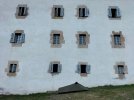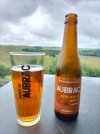Ge1ert
New Member
- Time of past OR future Camino
- I will
Hi
Apologies for my naievity. I have only just started posting here after 2 years, but I now have enough free time to 'walk'.
For people who carry a tent and backpack, can anyone please recommend a past thread (if such a one exists), where people have compared or recommended backpack and clothing lists for the Camino. I'm planning on walking as much as I can of the Via Podiensis, from Le Puy to Saint-Jean-Pied-de-Port.
My background is that I'm used to colder weather hiking in Scandinavia, where supplies are few and far between, but I've never distance hiked in warmer regions (Le Puy-en-Velay along the GR65 - probably from mid-May to July), and where villages occur along the way.
Because of this I want some idea of what people carry. So I can avoid carrying TOO MUCH. I will be carrying EVERYTHING THOUGH, that I need for camping.
Is there anywhere here where packing lists, pack-weight and clothing has been discussed please? I have a good amount of camping kit, but I just don't want to be overloaded unnecessarily.
Thanks
Apologies for my naievity. I have only just started posting here after 2 years, but I now have enough free time to 'walk'.
For people who carry a tent and backpack, can anyone please recommend a past thread (if such a one exists), where people have compared or recommended backpack and clothing lists for the Camino. I'm planning on walking as much as I can of the Via Podiensis, from Le Puy to Saint-Jean-Pied-de-Port.
My background is that I'm used to colder weather hiking in Scandinavia, where supplies are few and far between, but I've never distance hiked in warmer regions (Le Puy-en-Velay along the GR65 - probably from mid-May to July), and where villages occur along the way.
Because of this I want some idea of what people carry. So I can avoid carrying TOO MUCH. I will be carrying EVERYTHING THOUGH, that I need for camping.
Is there anywhere here where packing lists, pack-weight and clothing has been discussed please? I have a good amount of camping kit, but I just don't want to be overloaded unnecessarily.
Thanks




















